Q
How to open the hood of Jaguar F-TYPE?
To pop the hood on a Jaguar F-Type, first make sure the car's completely switched off. Then, down by your left foot in the driver's footwell, you'll spot a lever with a little hood icon on it. Give that a gentle pull—you should hear the first latch release with a soft "click." Next, head around to the front of the car, slide your fingers into the gap at the center of the hood's leading edge, feel for the secondary latch, flip it up, and then lift the hood smoothly. It's got that double-latch setup, which is standard on a lot of luxury sports cars—Porsche 911s use something similar—to keep it rock-solid at high speeds, which makes total sense for a car like this.
Quick tip for Malaysian owners: with the hot, humid weather over there, it’s a good idea to check your fluids regularly and keep an eye on hoses for any signs of wear, especially before and after the rainy season. And if you ever struggle to open the hood? Don’t force it—grab the owner’s manual for the emergency release steps or hit up your local Jaguar service center. These premium sports cars have pretty intricate mechanicals, so messing around without knowing what you’re doing could end up causing unnecessary damage. Better safe than sorry, right?
Special Disclaimer: This content is published by users and does not represent the views or position of PCauto.
Related Q&A
Q
What is the top speed of the Jaguar F-TYPE 2013?
The 2013 Jaguar F-TYPE delivers varying top speeds based on its powerplant options. The range-topping F-TYPE R Coupe, packing that brute 5.0-litre supercharged V8, can hit an impressive 300 km/h. On the flip side, the entry-level 3.0-litre supercharged V6 model still pulls a respectable 260 km/h. These figures really showcase Jaguar's expertise when it comes to tuning for performance. For Malaysian petrolheads, the F-TYPE isn't just a stunner with that classic British elegance; it's a proper driver's car that truly comes alive on the highway. Something worth noting – Malaysia's tropical heat can be a real test for high-performance engines, but Jaguar's done a solid job optimizing the F-TYPE's cooling system. It keeps its cool and performs consistently even when the mercury soars. Plus, the dynamic chassis control is a nice touch. It automatically adjusts suspension stiffness depending on the road, making sure you get a comfy ride whether you're on smooth tarmac or those more challenging stretches we sometimes encounter here.
Q
What are common problems with the F-Type?
As a high-performance sports car, the Jaguar F-Type can encounter some common issues when dealing with Malaysia's hot climate and challenging road conditions. One thing to watch out for is occasional electronic gremlins – stuff like the infotainment system freezing up or sensors giving false warnings. Usually, a quick software update sorts those out. Then there's the aluminum body; leaving it out in our constant heat and humidity can lead to minor oxidation around some panel gaps over time, so regular detailing is a good idea to keep it looking sharp.
Malaysian owners really need to stay on top of cooling system maintenance too. That relentless heat speeds up wear on water pumps and hoses, so don't skip those checks. If you've got the supercharged model, I'd recommend shortening the oil change interval to every 8,000 km to make sure that engine stays properly lubricated under stress.
When it comes to the suspension, the F-Type's sporty setup might feel a bit firm on some of our rougher roads – but that's just part of its character, not a fault. And here's something to note: the brakes can start making some noise after hard, repeated use. Don't stress though – that's totally normal for high-performance brake pads and doesn't affect safety one bit.
For Malaysians looking at a used F-Type, pay extra attention to how smoothly the gearbox shifts and the condition of the chassis rubber components. Those are the areas that tend to show wear as the mileage creeps up.
Q
Why did Jaguar discontinue the F-Type?
The main reason Jaguar is discontinuing the F-Type is to align with the brand's strategic shift towards electrification, and let's be real, the sports car's lifecycle was already winding down. Since its debut back in 2013, the F-Type won over plenty of enthusiasts with its classic looks and solid performance, no doubt about it. But with the global auto industry going all-in on new energy, Jaguar's decided to pour resources into developing the next gen of electric models—like their upcoming fully electric lineup, for example.
On top of that, the sports car segment is a pretty niche market. In places like Malaysia, where practical rides rule the roads, F-Type sales probably just weren't strong enough to justify keeping it updated. Here's the thing, though: axing the F-Type doesn't mean Jaguar's giving up on performance. Word is they might roll out electrified high-performance models down the line to keep that sporty DNA alive.
For Malaysian fans, sure, it's a bummer to see the F-Type go. But hey, there's plenty to look forward to—Jaguar's future models promise to be greener and more tech-forward. And if you still want a taste of that British sports car magic, the used market's always got your back.
Q
Did Ford own Jaguar in 2013?
By 2013, Ford no longer owned Jaguar. That's because back in 2008, Ford sold Jaguar, along with Land Rover, to India's Tata Motors. So, in 2013, Jaguar was part of the Tata Motors family. Ford had originally bought Jaguar in 1989 and ran the brand for nearly 20 years, churning out some real classics during that time – take the Jaguar X-Type, for example. It shared a platform with the Ford Mondeo but kept that Jaguar luxury vibe when it came to design and how it drove. For Malaysian car fans, Jaguar's always had a rep here for sleek design and solid performance. Tata stepping in kept the Jaguar story going, too, like with the awesome F-Type sports car and the XE sedan that got so much love. Even though Ford doesn't own Jaguar anymore, car enthusiasts still love talking about their historical connection. And Jaguar still holds its own in the Malaysian market, especially those posh models that mix that classic British charm with cutting-edge tech.
Q
Is the Jaguar F-TYPE reliable?
The Jaguar F-TYPE, as a luxury sports car, delivers decent overall reliability in the Malaysian market, though its maintenance costs and ownership experience require careful consideration within the local context. Under the hood, the turbocharged engine paired with the 8-speed automatic transmission is pretty solid tech-wise. But let's be real, high-performance bits like the suspension and electronics do demand a bit more TLC. Living in a tropical climate like ours? Definitely make it a habit to check the cooling system regularly and keep an eye on rubber components for aging.
Malaysian owners should note that original factory parts (genuine parts) for imported luxury cars can have longer lead times. Sticking with authorized service centers is your best bet for ensuring quality service. What really sets the F-TYPE apart in its class is that iconic British design flair and that unmistakable exhaust note – pure character. That said, compared to its German rivals, it does tend to hold its value slightly less well as a used car.
If you're planning to keep it for the long haul, splurging on an extended warranty might be a smart move to mitigate potential repair headaches. And don't skimp on fuel – feeding it 98 RON unleaded will help keep that engine purring at its best. All in all, stick to a strict maintenance schedule and go through proper channels for upkeep, and the F-TYPE should deliver a driving experience that lives up to its badge.
Q
How much horsepower does a 2013 Jaguar F-TYPE have?
The 2013 Jaguar F-TYPE came with a range of powertrains to suit different appetites. The base model packed a 3.0-liter supercharged V6 kicking out 340 horsepower, while the feistier F-TYPE S upped that to 380 horses. But if you really wanted to unleash the beast, the top-dog F-TYPE R boasted a 5.0-liter supercharged V8 pumping out a whopping 550 horsepower. Paired with rear-wheel drive (or optional all-wheel drive) and an 8-speed automatic gearbox, the V8 rocket shot from 0-100 km/h in just 4.2 seconds, truly embodying the spirit of a British sports car with serious performance credentials.
Over in Malaysia, the F-TYPE wins applause mainly relies on its precise handling and exhilarating exhaust sound.Given the hot local climate, it's smart to keep a close eye on the cooling system and supercharger components with regular checks. Opting for a higher viscosity engine oil is also a good move to ensure the motor stays happy and durable. On the ownership front, Malaysia's AP import car policies can toss a curveball into the used car market, but the F-TYPE's timeless design has helped it hold onto strong residual values. Its aluminum body construction is another plus for handling the heat and humidity. When it comes to maintenance, don't overlook the importance of keeping the factory ECU tune dialed in to work well with local fuel quality.
Popular Cars
Model Year
Car Compare
Car Photo
Latest Q&A
Q
Which is better, 1.5 petrol engine or 1.4 turbo petrol engine?
The 1.5L naturally aspirated engine and 1.4L turbocharged unit each have their merits—your choice really depends on driving priorities.
The 1.5L's simpler design means lower maintenance costs, making it ideal for city commuting with consistent fuel efficiency. That said, it can feel a bit sluggish when overtaking on highways.
The 1.4T, on the other hand, delivers stronger low-end torque thanks to turbocharging, offering punchier acceleration—perfect for frequent highway runs or drivers who enjoy spirited performance. Just keep in mind turbo engines demand pricier upkeep and higher-grade fuel.
For urban driving, the 1.5L is the more economical pick. But if you crave power, go for the 1.4T. Worth noting: modern turbos have come a long way—lag is far less noticeable now, and small-displacement turbo engines balance performance and efficiency surprisingly well. My advice? Test drive both to feel the difference firsthand.
Q
What is the meaning of 2.4 L engine?
A 2.4L engine refers to a displacement of 2.4 liters—the "L" stands for liters, which measures the total swept volume of all cylinders in the engine. Essentially, it’s the combined space the pistons cover as they move from top to bottom. A larger displacement generally means the engine can take in more air and fuel, delivering stronger power output—ideal for vehicles that prioritize acceleration and high-speed cruising, like midsize SUVs or sporty sedans.
That said, bigger displacement usually comes with higher fuel consumption, so it’s a trade-off. Thanks to modern tech like turbocharging and direct injection, smaller engines can now deliver power close to that of larger ones while staying more fuel-efficient. For everyday driving, a naturally aspirated 2.4L engine offers smooth power delivery, solid torque, and relatively low maintenance costs—making it a well-balanced choice.
Q
Is 1.6 a powerful engine?
Whether a 1.6L engine is considered powerful depends on its intended use and benchmarks. For daily commuting or city driving, it’s more than adequate—this displacement is common in compact to midsize sedans, typically delivering around 120-150 horsepower. Paired with a CVT or dual-clutch transmission, fuel efficiency is solid.
However, if you prioritize sporty performance or frequently tackle steep climbs with a full load, it might feel underwhelming, especially compared to turbocharged engines where low-end torque falls short. Modern tech like direct injection and variable valve timing has significantly improved the efficiency of 1.6L naturally aspirated engines, with some high-performance tunes even exceeding 180 horsepower.
Keep in mind that perceived power is also influenced by vehicle weight, transmission tuning, and driving style. A lightweight hatchback with a manual gearbox, for instance, can feel more responsive than a heavier SUV with a larger engine. When choosing a car, test drives matter more than specs—try to experience real-world performance. Also, check power and torque curves to see how the engine behaves in your typical RPM range.
Q
What is the difference between a 1.5 l and a 2.5 l engine?
The key difference between 1.5L and 2.5L engines boils down to displacement—which directly impacts power output and fuel efficiency.
A 1.5L engine typically prioritizes fuel economy, making it ideal for city driving. It delivers smoother but more modest acceleration, while a 2.5L packs more punch with higher torque, better suited for highway cruising or frequent overtaking—though at the cost of higher fuel consumption.
Beyond performance, displacement also affects running costs: larger engines usually mean higher road tax and insurance premiums. Technically, smaller engines often rely on turbocharging to compensate for power deficits, whereas bigger ones tend to use natural aspiration or multi-cylinder designs for linear delivery.
Your choice depends on needs. If you’re mostly commuting and want efficiency, the 1.5L makes sense. But if you crave performance or regularly tackle long trips, the 2.5L shines. That said, modern tech like direct injection and variable valve timing has narrowed the gap between small and large-displacement engines.
Q
What is the difference between 1.5 L and 1.3 L engine?
The most obvious difference between 1.5L and 1.3L engines lies in their displacement—the 1.5L unit has roughly 200cc more cylinder capacity than the 1.3L. This directly impacts both power delivery and fuel efficiency. Generally, the 1.5L delivers higher horsepower and torque, making it better suited for situations demanding stronger performance, like highway overtaking or heavy loads. The 1.3L, on the other hand, prioritizes fuel economy, ideal for daily city commuting.
Your annual road tax bill also factors in here—larger displacement typically means higher fees. That said, modern turbocharging tech has narrowed the gap. A turbocharged 1.3T, for instance, can now match the punch of a traditional 1.5L naturally aspirated engine.
Choosing between them boils down to your driving habits. Frequent long-distance or mountain driving? Go bigger. Mostly crawling through urban traffic? The smaller engine’s frugality wins. Just remember, performance isn’t just about displacement—it’s also shaped by tuning and tech like direct injection or hybrid systems.
View MoreRelated News
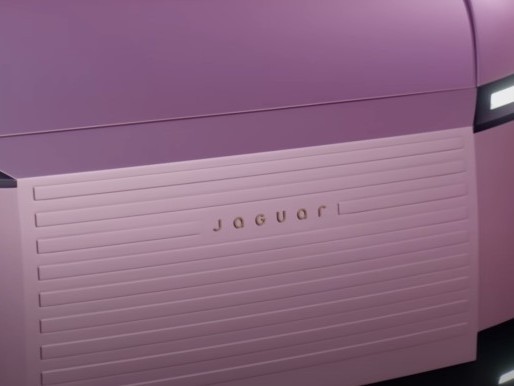
Jaguar Type 00 concept car stuns appearance! "Copy Nothing" design concept!
MichaelDec 4, 2024
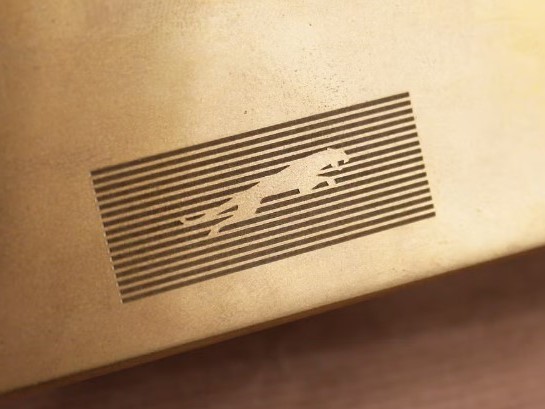
Jaguar's brand new LOGO is revealed, possibly for the new model set to be released on December 2nd!
AshleyNov 20, 2024

New spy photos of JAGUAR's all-electric car model are revealed for the first time, aiming at Porsche and Maserati!
RobertNov 18, 2024
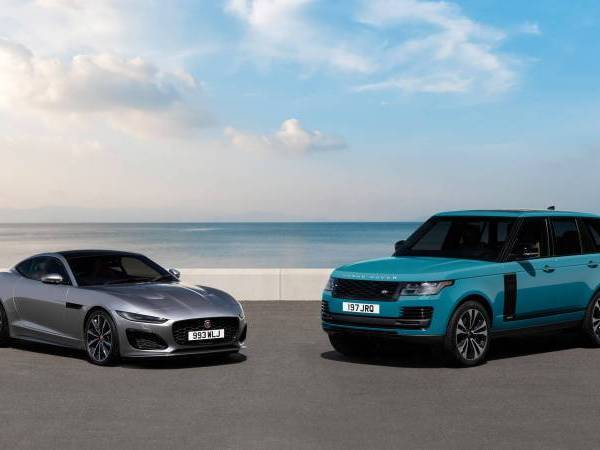
Supply chain crisis! The production of Jaguar Land Rover could be affected by aluminium shortage!
AshleyAug 7, 2024








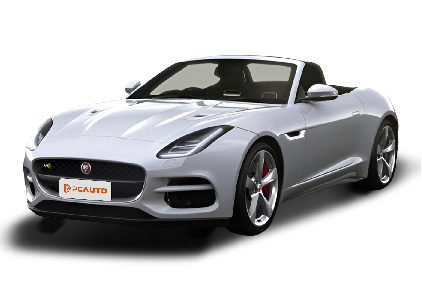
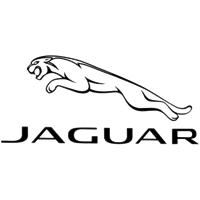 Cars
Cars




Pros
Cons